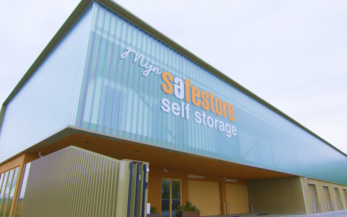4 minutes11/27/2017
For many SMEs safety management processes often include a lot of manual activity and paperwork. Manual work consumes a valuable resource - time. And paper? Well, that has a habit of getting lost. SMEs don’t usually have ISO18001 or other certified management systems in place for safety. Having said that, the ones that do have the best safety records usually have advanced safety methods, similar to companies with ISO certification. Larger companies, which are certified, usually have a very structured process to manage the paper trail related to incident reports, audits and risk assessments. It is also likely they have modern technology and EHS management software assisting them to do the job.
What kind of tools could an SME use to support its work? The truth is that with reasonable investment, an SME can quite easily adapt tools to assist.
Let’s have a short example…
You are working on a shared site and a new phase of work is starting. You fill in the necessary checklist to evaluate possible hazards, note down the risks and you also notice a few things which need to be fixed before you can start.
After filling in the paper form at the site, you go back to your desk where you scan the paper and email it to stakeholders. You write emails to few different contractors and your maintenance people to get things fixed. Next day you call the people to whom you emailed to find out whether the issues are fixed. You have spent a lot of time just taking care of the basic safety of the site so you can get work started.
But what if you could simply fill in an electronic audit form with your smartphone, assign automated tasks to the relevant parties and automatically distribute the audit to everyone when you submit it? Everyone would also be able to check the cloud EHS platform on-demand, anytime and anywhere on whether there are open tasks that need to be taken care of.
What are the tools you would need to get started?
Let’s assume that you have loosely adapted certain advanced safety practices which originate from standards such as ISO. You are probably doing risk assessments, regular safety audits and collecting incident reports from your staff. Depending on your industry, you might also share this information with your business partners.
The Safety Management Tech Stack
Incident reporting and management
This tool should enable you to collect information on health, safety and quality incidents from any environment. This could be already part of your audit tool. Everybody at your site should be able to submit their reports to you. There are plenty of incident reporting apps available in the market and choosing the right one might be difficult. Here are few things to consider.
Is this function part of your audit tool already?
Can people attach photos? Can they attach GPS location?
Are reporting templates customizable?
Where do the incident reports go? How does the supervisor receive them? Is there any process to analyse/investigate incoming reports?
How easy it is to submit a report – if it is too complicated you might not get all the reports
Audit Tool
If you have adapted parts of the ISO framework to your operations, or your partners and customers are ISO compliant, you are probably doing some daily/weekly audits. For these audits, you should be using the same app which you use for Job-Specific Risk Assessments and JSAs. The same basic requirements would apply here.
Risk assessment tool
- Full Risk assessment
Risk assessments are heavy and clumsy but at the same time are typically required by the regulations. I would love to see here more agile methods to evaluate the risks, but for now this needs to be addressed. As this is not frequent, an SME can even run this with free risk assessment tools such as OIRA project from the European Union. - Job Specific Risk Assessment & Job Safety Analysis (JSA)
These are more frequent and much lighter than company-wide risk assessments. As they are done on the site, it is best to use a mobile solution for them. With the mobile app, you ensure that the form is always available and people don’t need to look for it. Make sure the app provides at least these basic functions:
- Customizable forms
- Support for photo attachment to risks and tasks
- Support for assigning and managing corrective actions
- Cloud data storage, automatically shared with the relevant parties
- Support for attaching GPS location to tasks and observations
With these basic functions, you can get started. They could all be included in one tool or you could use separate tools. Other tools you might want to consider are e-learning platforms and solutions which help you to track legal and regulatory information, such as guidance and best practice.
Also, spare a few thoughts on how the app could be integrated with other solutions in the future so you can get access to additional features when they become available. You can find information on EHS solutions and social proof on websites such as Capterra.



